The Yamaha MT-07 and MT-09 have been favorites among motorcyclists for years, thanks to their powerful performance, dynamic handling, and striking design. With the introduction of the Yamaha MT-09 Y AMT, an innovative feature takes center stage: the Automatic Manual Transmission (AMT). This technology is designed to make riding easier and more efficient while maintaining the bike’s sporty character.
Naturally, this had to be tested at Motostore Barendrecht. How does the new MT-09 model ride, and what’s my take on the AMT function? Is it better than Honda’s DCT?
This review will focus primarily on the AMT feature of the MT-09 and why it can be a valuable addition for both beginner and experienced riders alike
The new 2024 MT-09
The fourth-generation Yamaha MT-09 delivers an exciting blend of refinement and raw fun. Its updated design creates a more aggressive riding position, with handlebars placed further forward and footpegs positioned higher and slightly backward. The redesigned fuel tank provides a better grip when leaning into corners. These adjustments shift more weight to the front wheel, enhancing feedback and precision for the rider.
Yamaha has also revamped the MT-09’s chassis, front suspension, and rear setup. The stiffer frame and forks, combined with the new rear shock, make the MT-09 feel sharp and responsive. Trail braking reveals the synergy between the suspension and the axially mounted Brembo master cylinder, delivering an exceptional braking feel.
The MT-09’s secret weapon lies in its torque delivery. While some motorcycles deliver aggressive, untamed power that can tire riders out, the MT-09 strikes a balance between power and playfulness. It’s spirited and reactive enough for seasoned riders to enjoy, without being overwhelming for beginners. With nearly 95 Nm of torque and 120 horsepower, the engine provides usable power across the entire rev range. Whether accelerating from a standstill or maintaining high speeds, the MT-09 offers a refined yet thrilling experience. It encourages playful downshifts and aggressive upshifts, which enhance its character. The redesigned intake channels and dual underslung exhausts elevate the sensory experience, creating a blend of bold and subtle sounds, with gentle pops and growls. It feels premium without requiring aftermarket upgrades.
Of course, no motorcycle is perfect, and the MT-09 has its quirks. The second gear, between 4,000 and 8,000 RPM, lacks the seamless throttle connection found elsewhere, likely due to EURO noise regulations. While a simple tune could resolve this, it’s a minor inconvenience that doesn’t disrupt an otherwise flawless riding experience. Plus, you can easily have fun without relying on second gear.
But how does shifting and the AMT system perform?

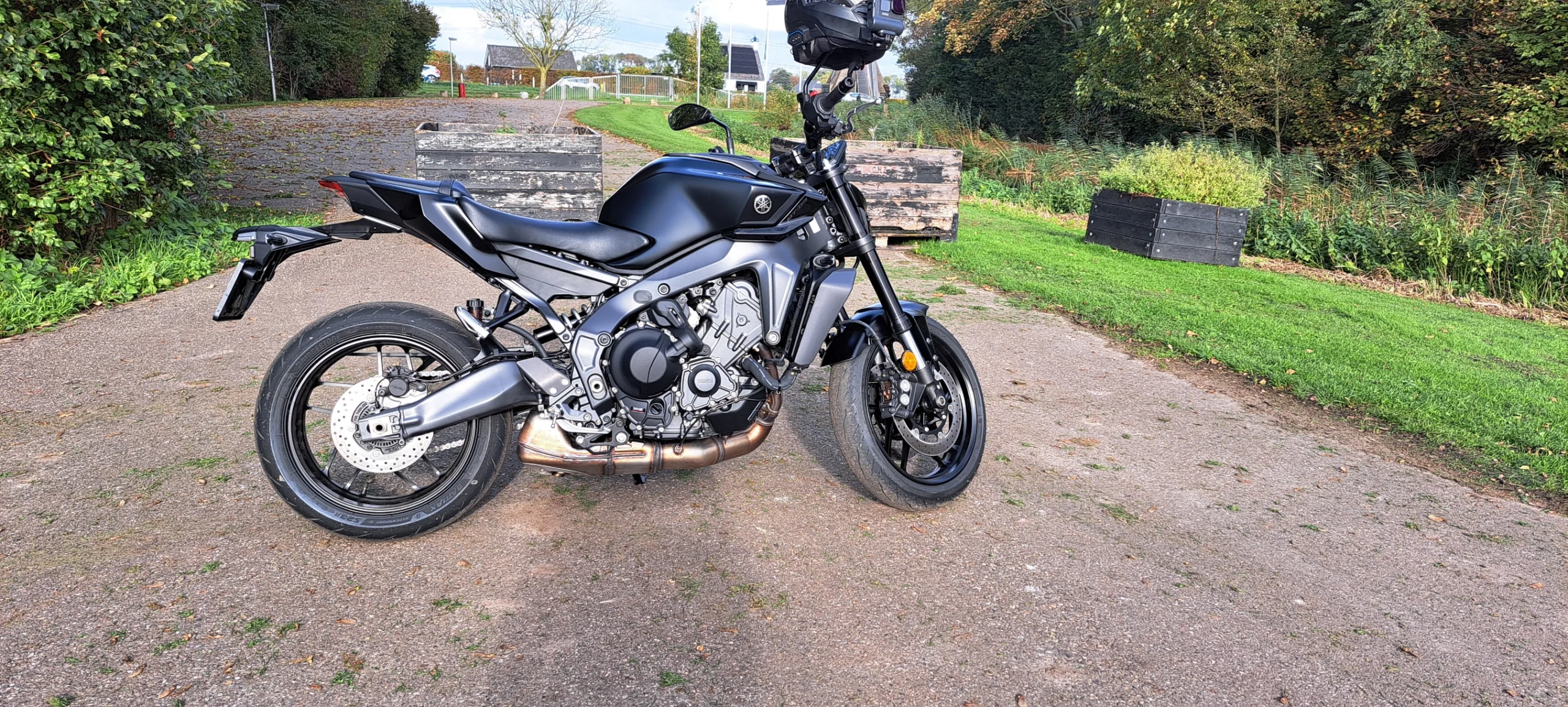
What is AMT and what makes it unique?
The Automatic Manual Transmission (AMT) is an innovative system that bridges the gap between traditional manual gearboxes and modern fully automatic transmissions. With a conventional motorcycle, the rider manually shifts gears using the clutch and gear lever. In contrast, the AMT offers a hybrid solution: gear shifting is partially or fully automated, while the mechanism itself is still based on a manual gearbox.
In the case of the Yamaha MT-09 Y AMT, this means riders can choose between a fully automatic mode or semi-automatic shifting using newly added buttons on the handlebars. The traditional foot-operated gear lever is no longer present.
This setup not only provides convenience but also offers flexibility across different riding conditions. Riders who want full control can still enjoy it—without the physical effort of operating a clutch. What’s fascinating is how quickly shifting with your thumb or index finger feels natural. The concept is easy to learn and intuitive.
Even in fully automatic mode, you still have the option to manually upshift or downshift if needed, giving you complete control in dynamic situations.
What makes this transmission unique is that the Yamaha MT-09 Y AMT retains the performance and thrill of a traditional motorcycle while lowering the barrier for beginners and adding comfort for experienced riders. Another excellent feature is the intelligent system behind the AMT. It shifts gears based on your riding behavior, rather than simply relying on RPM or speed. It even sounds impressively sporty during full-throttle acceleration. Additionally, if you’re riding in semi-automatic mode and need to perform an emergency stop, the AMT automatically downshifts for you, ensuring no loss in braking distance.
The Yamaha MT-09 Y AMT is the perfect blend of performance, innovation, and accessibility, making it an ideal choice for riders of all levels.
How does the Automatic Manual Transmission work?
The AMT in the Yamaha MT-09 Y AMT is a technological masterpiece that uses advanced electronics and mechanics. The system can be divided into three major parts:
Mechanical basis
The AMT works on a conventional gearbox with gears that shift mechanically, just like a manual engine. The big difference is in the automation of the clutch and shifting, which is done by an electro-hydraulic system.
Electronic Control
The central control module (ECU) plays a crucial role in the process. The ECU collects data from various sensors and decides when and how to shift. Factors such as engine speed, throttle position, speed, and load are continuously monitored. Based on this, the ECU calculates the ideal shift moment and sends signals to the actuators.
This system was what surprised me the most, I was used to the older DCT that did not feel nearly as smart. The engine thinks along with your driving style, making it much more enjoyable.
Actuators and Coupling Mechanism
Actuators replace the traditional manual control. When the ECU determines that a gear needs to be changed, an actuator activates the clutch mechanism and shifts to the correct gear. This happens quickly and efficiently, without the rider noticing it immediately. Now and then you can hear that the AMT has shifted, but you don’t really feel it. It goes so smoothly and without a hitch. Positively surprised.
Detailed Switching Process
The switching process in the AMT can be summarized in three steps:
Input from Sensors
The ECU receives real-time information from sensors that collect data on:
– Engine speed: How fast the engine is turning.
– Speed: The current speed of the engine.
– Throttle position: How much throttle the driver is applying.
– Lean angle: To achieve gear shifting at the right time.
Decision of the ECU
Based on the input, the ECU determines the optimal shifting moment. In a fully automatic mode, this happens without input from the driver. In semi-automatic mode, the driver can shift manually, whereby the ECU ensures that the clutch is operated smoothly. Here too, you can shift up and down very quickly without noticing it. However, the ECU does keep an eye on everything, so shifting to 6th while driving 20 km/h is not possible. On the other hand, if you have to do an emergency brake, or you are not yet in the right gear at the traffic lights, the AMT will shift down for you. The Engine dying is virtually impossible with this.
Execution by Actuators
Once the shift point is determined, the clutch is activated by an actuator, disengaging the gear of the current gear and engaging a new gear. This process happens in milliseconds, ensuring a smooth transition.
Driving Modes and Shifting Options
The Yamaha MT-09 Y AMT offers two main modes:
– Fully Automatic: The system determines everything, which is ideal for relaxed riding in urban areas or traffic jams. You can choose between Mode D and Mode D+. The difference is not immediately noticeable, and I spent most of my time riding in D+.
– Semi-Automatic: The rider can shift gears himself via buttons on the handlebars, which is useful for sporty riding or more control on winding roads. The demo bike had 1 Mode; the Street mode.
If connected to your mobile phone, there is also a Rain Mode and a Sport mode. In addition, there are two fully customizable Custom Modes.
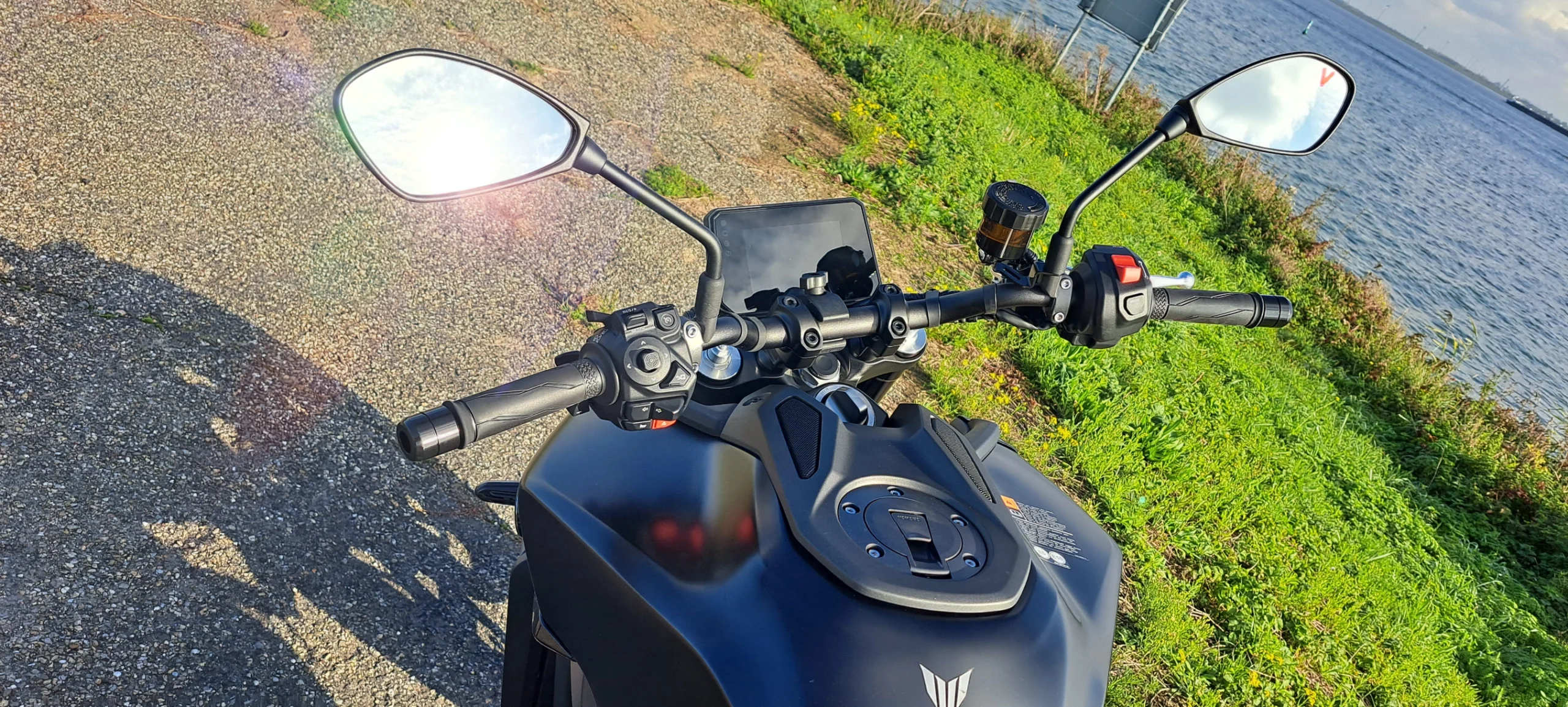

Advantages of the Automatic Manual Transmission
The Yamaha MT-09 Y AMT offers several advantages that make motorcycling more attractive and comfortable for many people. Here are the main advantages:
Convenience and Accessibility
– For beginners, the elimination of a manual clutch and gearshift can lower the threshold for learning to drive.
– In heavy traffic, such as in the city, the AMT eliminates the need to clutch and shift, which reduces fatigue constantly. This also applies, of course, when driving in traffic jams or when standing at traffic lights. No more clutch to hold.Reduced Fatigue
– Riders need to exert less effort during long rides or stop-and-go situations. This makes the AMT attractive for tour riders and commuters.
– The system reduces physical strain, especially on the hands and wrists. This may sound “far-fetched” but it is noticeable on longer rides. It is also easier to ride with one hand and thus relax your back.
Efficiency
– The ECU shifts at the optimal moments, which can result in lower fuel consumption compared to inexperienced riders who do not always shift correctly. This is highly dependent on your riding behavior as a motorcyclist of course.
– The reduced wear of clutch parts thanks to precise operation extends the life of the engine. There is also a disadvantage to this, possibly more wearing parts.
Flexibility
– The ability to choose between automatic and semi-automatic operation gives riders control over how they want to ride.
– Suitable for both sporty rides and relaxed trips.
– Also suitable for some less disabled people, without having to spend a lot of money to make it suitable for them as a motorcyclist.
Consistent Performance
– The AMT always provides the same shifting force and speed, which can help in situations where consistent performance is important, such as when cornering or on wet roads.
Disadvantages of the Automatic Manual Transmission
While the AMT has a lot to offer, some drawbacks are important to consider before opting for the Yamaha MT-09 Y AMT:
Higher Costs
– Due to the addition of advanced technology, the purchase price is often higher than that of a comparable model without AMT. The standard MT-09 for £10,106.- or $10,599 vs. the MT-09 Y AMT for £10,656.-. The USA doesn’t seem to have an Y AMT option yet, at the time of writing. A difference of only £450,- I find very reasonable.
– Repairs and maintenance can be more expensive, especially because specialized knowledge is required. This is specifically when there are problems with the AMT, something you do not immediately expect when purchasing a new model, and will be covered by the warranty in the first period.
Weight gain
– The components required for the AMT, such as actuators and sensors, add extra weight to the bike. While the difference is minimal, it can be noticeable to experienced riders. I actually didn’t notice it while riding. The difference between 189kg for the MT-09 (2023) and the 196kg of the MT 09 Y AMT (2024) is minimal. And it’s a low weight, which can benefit balance and control.
Less Direct Control
– Some experienced riders prefer a traditional gearbox because it offers a more direct and involved riding experience. This is also often one of the disadvantages that people use to attack scooters and electric motorcycles.
Complexity
– The system is more complex than a traditional gearbox, which can mean it is more susceptible to technical problems if not properly maintained.
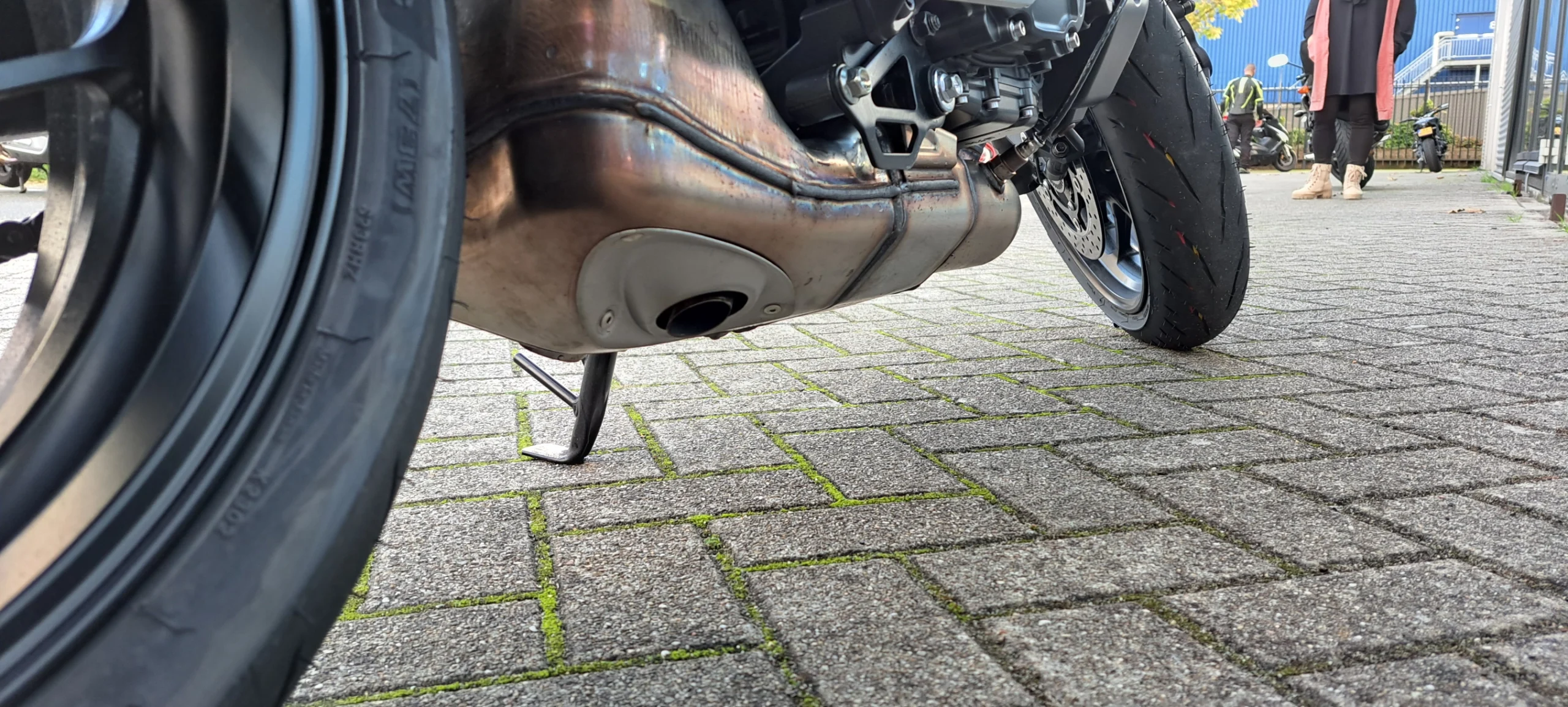
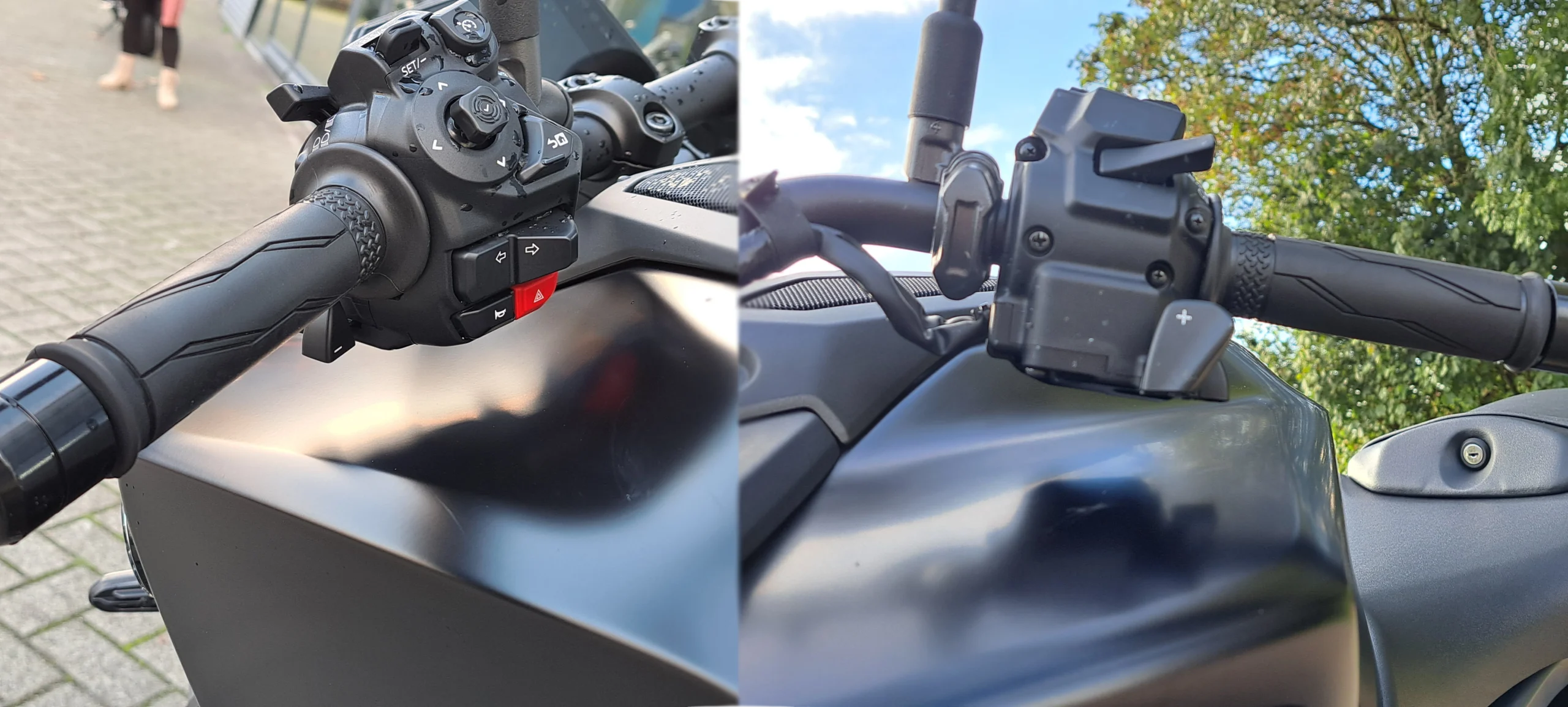
Why the Yamaha MT-09 Y AMT?
The Yamaha MT-09 Y AMT caters to a wide range of motorcyclists. Beginners can benefit from its user-friendly operation, while experienced riders will appreciate the convenience the AMT system offers for daily use or long-distance rides. This system is particularly well-suited for:
- Beginners: Thanks to the simplicity of automatic operation.
- Touring riders: Reduced fatigue during long journeys.
- Commuters: Ideal for urban rides and stop-and-go traffic.
- Sporty riders: The semi-automatic mode still provides control while reducing physical strain.
For motorcyclists who value comfort and innovation without sacrificing performance, the Yamaha MT-09 Y AMT offers an appealing package. It’s the perfect balance of tradition and innovation. By incorporating AMT technology, Yamaha has made motorcycling more accessible, comfortable, and efficient. While there are a few drawbacks, such as the cost and slightly higher weight, I believe the benefits far outweigh these downsides. That said, I understand that riders who enjoy the full experience of manual shifting may prefer a traditional system. I enjoy both and had no issues riding the MT-09 Y AMT.
The MT-09 Y AMT is available in Yamaha’s three signature colors:
Midnight Cyan: The iconic MT color.
Icon Blue: Yamaha’s signature blue.
Tech Black: The version I had the pleasure of riding.
This color lineup is similar to that of the Yamaha YZF-R7.

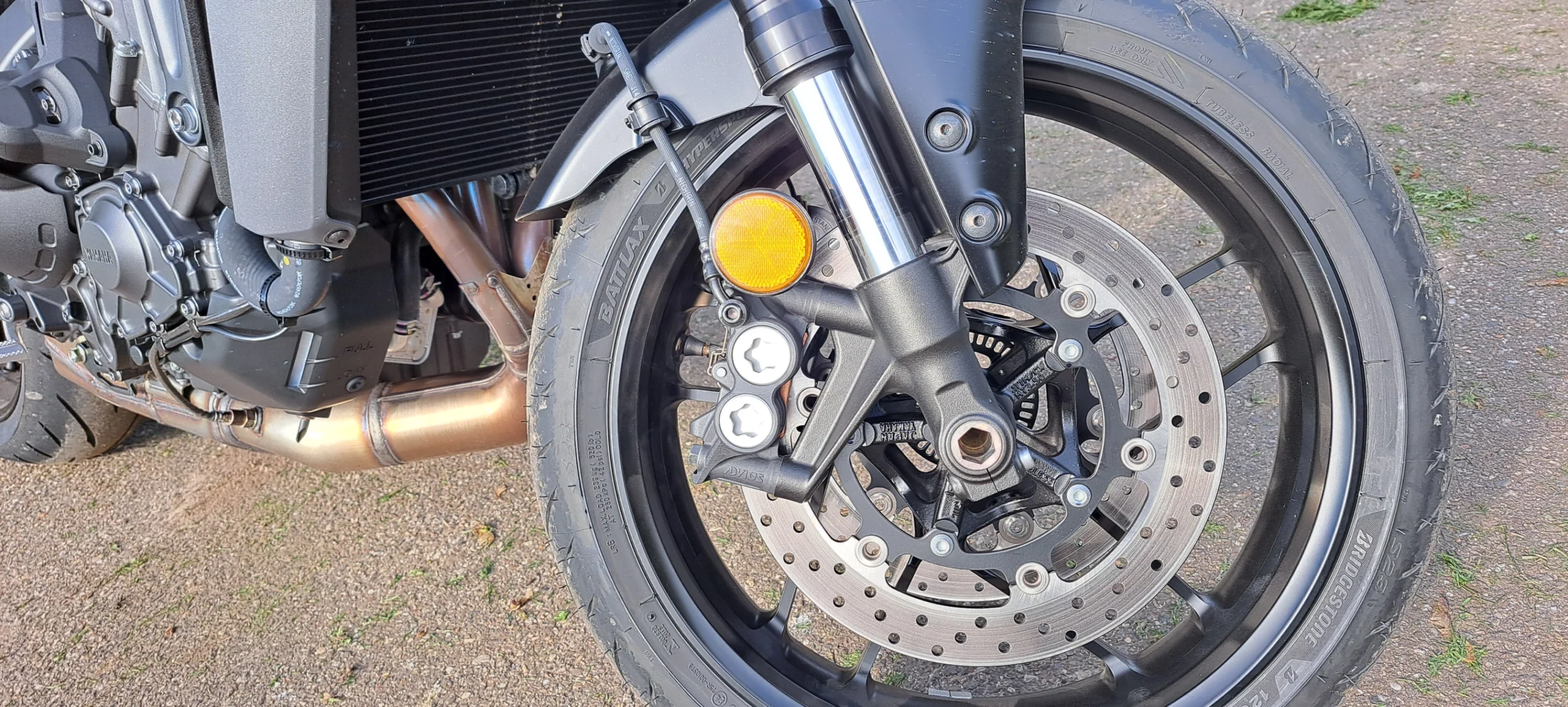
Conclusion
Yamaha’s MT series is all about pure, intoxicating fun, and the new MT-09 Y AMT lives up to that reputation. Its versatility, thrilling power delivery, and refined handling make it a standout choice for riders seeking an all-rounder with a mischievous edge. Whether you’re a seasoned enthusiast or a weekend warrior, this bike guarantees a smile on every mile.
In many ways, it’s a strong contender for a one-bike garage—a true all-rounder with a bold and spirited personality. The wide usability of the AMT makes the MT-09 accessible to a new audience while staying true to its core fans.
There’s something undeniably satisfying about opening up the throttle on a long stretch of empty (and private) asphalt, and hearing the exhaust crackle as the AMT smoothly shifts gears at high revs. It’s an experience that captures the essence of the MT-09: thrilling, engaging, and simply fun.
Engine block | 4-stroke, Liquid-cooled, In-Line Three-Cylinder |
Cylinder capacity | 890 cc |
Bore x Stroke | 78,0 × 62,1 mm |
Compression ratio | 11,5 : 1 |
Ignition | Electronic ignition |
Max. power | 119 pk / 87,5 kW @ 10.000 rpm |
Max torque | 93,0 Nm / 68,6 lb-ft @ 7.000 rpm |
Drive | 6 gears, Constant mesh |
Frame | Lightweight CF cast aluminum frame |
Front suspension | Upside-down telescopic fork, Ø41 mm |
Rear suspension | Link type suspension system, Rear swingarm |
Suspension travel | 130mm front and 117mm rear |
Front brakes | Hydraulic brake system with two brake discs, Ø298 mm |
Rear brake | Hydraulic brake system with one brake disc, Ø 245 mm |
Wheels | Spinforged rims with Bridgestone Battlax Hypersport S23 |
Front tire | 120/70ZR17M/C (58W) Tubeless |
Rear tire | 180/55ZR17M/C (73W) Tubeless |
Length | 2090 mm / 82.3 inch |
Width | 820 mm / 32,3 inch |
Height | 1145 mm / 45,0 inch |
Wheelbase | 1.430 mm / 56,3 inch |
Seat height | 825 mm / 32,5 inch |
Ground clearance | 140 mm / 5,5 inch |
Weight | 196 kg / 432 lbs rijklaar |
Fuel capacity | 14,0 Liter |
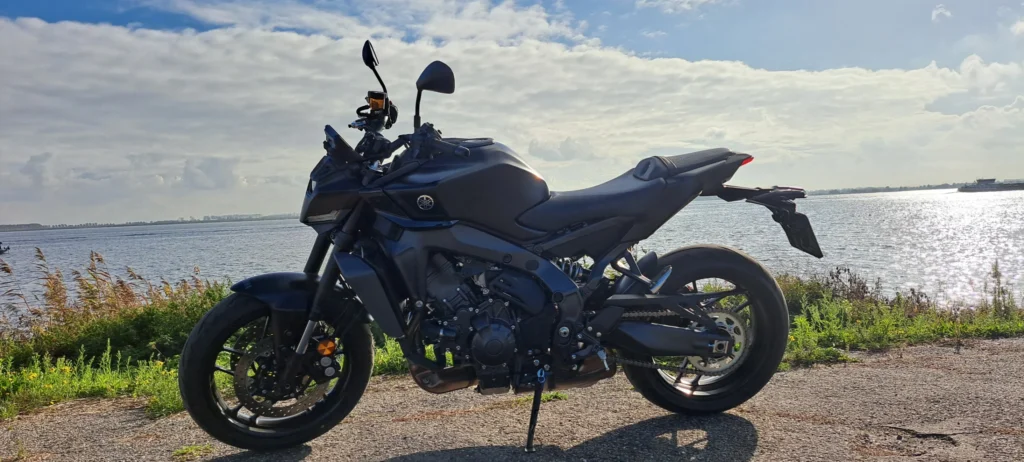
Meer Posts
Yamaha Neos Dual Battery – weektest (2024)
Yamaha YZF-R7 – 2022